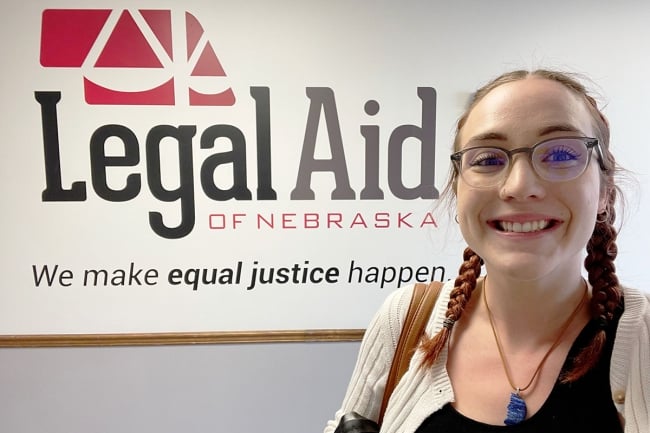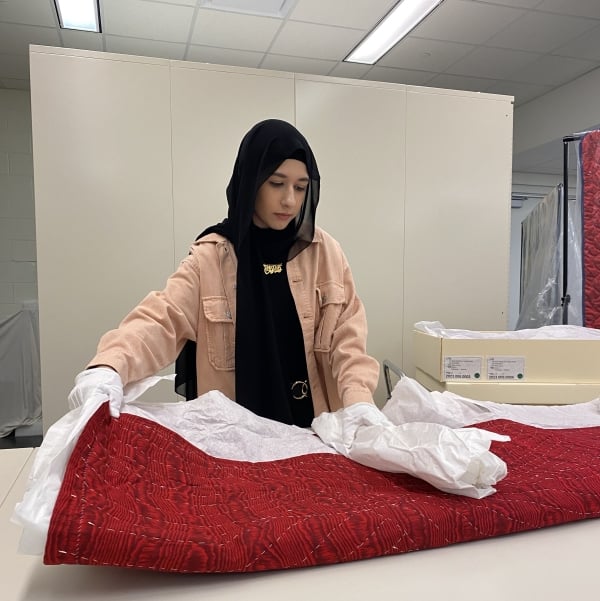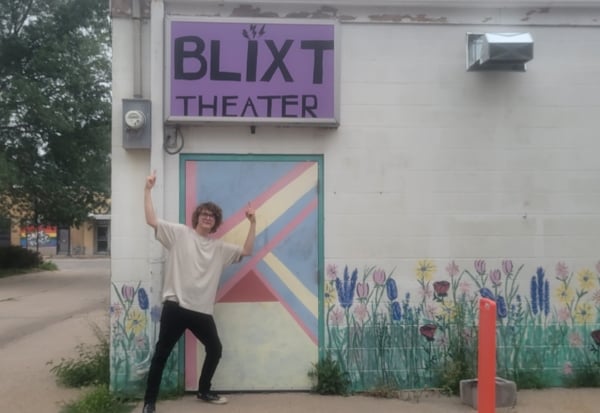You have /5 articles left.
Sign up for a free account or log in.

First-generation, low-income and BIPOC students at the University of Nebraska at Lincoln can participate in a microinternship and mentoring program, designed to help them with career exploration and building social capital.
University of Nebraska at Lincoln
Internships are a high-impact activity for students, connecting curricular learning to real-world scenarios and providing a glimpse into career offerings. Over half of respondents to a winter 2023 Student Voice survey by Inside Higher Ed and College Pulse say their program of study includes or requires internship experience, and that number grows to 55 percent of those at four-year institutions.
However, disparities exist in who is participating in internships. In 2022, a Student Voice survey found first-generation students were less likely to have internships or to complete their internship in person compared to continuing-generation peers. Female students are also less likely to have a paid internship than their male peers.
To increase availability of internships for minoritized groups, the University of Nebraska at Lincoln’s undergraduate division created a microinternship and mentoring program for low-income, first-generation or underrepresented minority students.
The inspiration: Experiential learning is a key focus in UNL’s 2025 strategic plan, inspiring students to be lifelong learners and contribute to the Nebraska workforce. Closing equity gaps for at-promise students is another priority.
UNL considers first-generation and low-income students “at-promise,” as well as learners from underrepresented minority groups including Black or African American, Hispanic, Native American and Indigenous students.
“The impetus was really to provide an opportunity for our at-promise scholars to engage in the type of experiential learning that we want all of our students to participate in,” explains Amy Goodburn, dean of undergraduate education and senior associate vice chancellor. “But we found that, for many of them, there were barriers to participation.”
An 2022 Student Voice survey found 60 percent of students had participated in some kind experiential learning, but 60 percent of those who participated in internships completed them during the summer.
At-promise scholars were more likely to hold part-time jobs, limiting their availability to participate in experiential learning—particularly unpaid internships—which made it hard for them to identify experiences.
“Our at-promise students need opportunities to have intentional and curated and point-in-time professional development, particularly because they don’t always have access to existing networks for getting an internship,” Goodburn explains.
Students can also be nervous to commit to an experience for an entire semester, making microinternships more attractive for the curious but wary student.
Other Models of Microinternships
Microinternships are one way to provide students with valuable work experience in a short period, giving them insights into professional work settings and networking.
- Nonprofit Break Through Tech offers technology microinternships for women and minority students at eight colleges and universities with one of 125 host employers, including Verizon, American Express, LinkedIn and CVS Health.
- Goucher College offers paid microinternships during the winter break and January term, matching interested students with alumni.
- As part of a four-year experiential learning program, the University of Nebraska at Omaha provides information science and technology students with a microinternship.
How it works: The program first launched in spring 2022, thanks to a three-year grant from a private foundation. Grant funding covers student wages and a graduate student to oversee the program.
The only eligibility requirement is that students identify as an at-promise scholar and complete an application for their desired internship. Students are also able to apply for multiple roles. The majority of participants are second- and third-year students, but some first-years have participated as well, which benefits their early career exploration.
Each internship is a paid position at $15 per hour, lasting between six to eight weeks with a total of 10 to 40 hours of work completed in person, remote or a mix of both.
“It gives them enough time to test the waters, experience something, participate in a project and determine, is this something I’d want to continue? Does this connect to my career goals?” Goodburn says. “Or, which is just as important to learn, that maybe it’s not going to connect to your career goals. That’s the type of exploration that these students often don’t have the luxury of having.”
Host companies determine the positions students will fill and select their interns, and some companies agreed to host multiple interns. A few of the employers for the spring 2024 term include Huffman Engineering, City of Lincoln Parks and Recreation, UNL’s College of Law, Lutheran Family Services, and YWCA Lincoln.

The International Quilt Museum is one of UNL’s internship partners, giving students a chance to learn about quilt preservation. The program’s funding model allows nonprofit partners to host interns at no cost to the organization.
University of Nebraska at Lincoln
During the internship, students complete weekly reflections and have regular meetings with their mentor, often the person supervising their work, to discuss their learning, offer feedback and create a professional relationship.
Adapting the process: Over the past two years, UNL has modified the program to best serve and support students.
Staffers decreased the number of questions in the application process, making it more accessible for students who are interested. Prior to starting the internship, students also complete an onboarding orientation, which puts them on UNL’s payroll and teaches basics of working in a professional setting.
Selecting employers and internship projects continues to be a focus, helping guide host companies on what is a feasible project and what is beneficial to the student and the company. Staff learned that the less descriptive a job posting was, the less likely students were to apply for the experience, so they now provide guidance around language and creating a job posting, says Preston Phelps, assistant director of the William H. Thompson Scholars living-learning community.

Microinternship experiences for at-promise students at UNL vary from on-campus work in a UNL division to work for corporate and nonprofit partners. BLIXT ARTS LAB, pictured here, is a small black-box theater in Lincoln that puts on artistic performances and provides a communal space for other groups.
University of Nebraska at Lincoln
In summer 2023, UNL and its partner companies hired 20 at-promise student interns for full-length internships. Scholars were paid $5,000 and completed a one-credit career-development course, which UNL paid for, including reflecting on the internship process.
The impact: The program has hit its goals of offering students experiential learning, connecting them with employers and providing a talent pipeline for after graduation. Satisfaction surveys, delivered to students and employers, have resulted in positive feedback and future recommendations, Phelps shares.
Lincoln students’ microinternships have benefited local businesses and nonprofits that might not otherwise be able to pay interns, which has also helped them create a diverse talent pipeline from the university, Goodburn explains. Students have also expressed that the experiences taught them about available career opportunities and aided them in creating connections with working professionals.
University leaders are exploring ways to keep the program sustainable after the grant funding ends through donor relations or a partnership with local officials looking to reverse brain drain from the state of Nebraska.
We bet your colleague would like this article, too. Have them sign up for the Student Success newsletter here.




